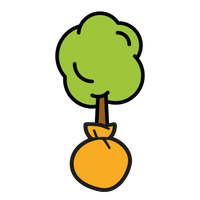When should I plant Japanese Holly hedging?
The best time to plant your Japanese Holly is from Autumn-Spring, providing the soil is not frozen and temperatures are not too warm.
How far apart should I plant Japanese holly plants?
If you are looking to grow your hedge up to 60cm (but not much more), we recommend planting 20cm apart (5 plants per metre). This is only possible with 2L pots, however.
In terms of growing a hedge taller than 60cm, we recommend planting around 30cm apart (or 3-3.5 plants per metre). This provides the roots with plenty of room to fill out and produce plenty of bushy up growth as a result.
How to plant Japanese Holly:
Begin by removing any weeds and debris from the soil (this ensures the plants can take in plenty of nutrients from the surrounding soil).̴Ì?
Then dig a trench that is around twice the width of the root ball, but the same depth. Mix some potting compost or organic matter into the excess soil. The soil mix will provide the roots with a good start in terms of minerals and nutrients. We do also recommend sprinkling RootGrow onto the bottom of the planting hole at this stage.̴Ì?
Continue to water the plants on a regular basis (we recommend watering around 2-3 times per week, or more so during warmer weather). You will have to do this for the next year or so whilst the plants establish.














